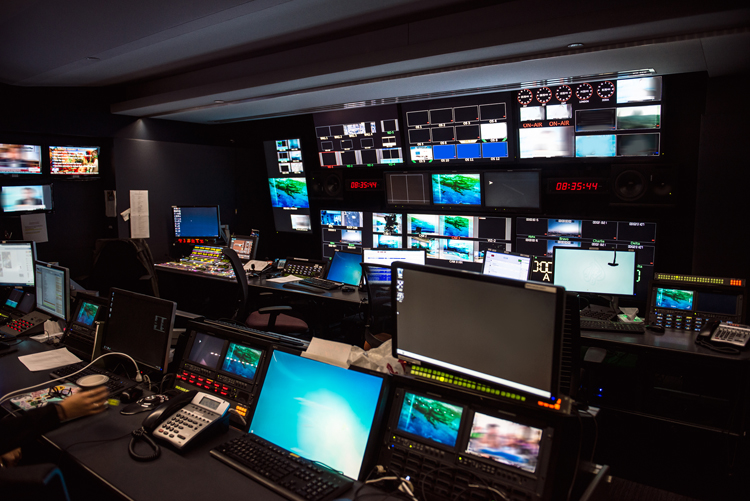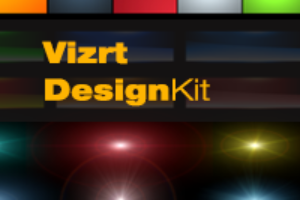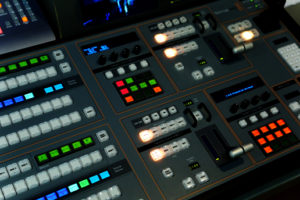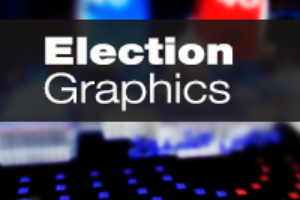TV Graphics, Taking Broadcasters To The Next Level
There once was a time when on-air TV graphics were called a "Chyron" and we could create these TV graphics with hardware devices called a Chyron or Dubner. If you remember any of these character generator systems then you know how much the TV graphics industry has changed in the last decade. Clearly, the industry is reaching new peaks with powerful graphics software and computer processors that are capable of rendering 3D animations in real time live while on-air.
Networks, newsrooms and live television producers are clearly seeing the benefit in using graphics to enhance their broadcast and take their productions to new levels. Solutions like augmented reality, virtual sets, camera tracking and studio automation are redefining the way producers and journalists convey complex data and display information on air.
 Though the technology has taken significant leaps it can still be seen as a major technical undertaking by broadcasters who must weigh, costs, ease of use, workflow, scalability and other factors when implementing one of these systems. The investment in an advanced TV graphics system makes sense for any broadcaster producing live content for a national or local audience. Not only can TV stations to do things with these graphic technologies they could never afford to do in the past but they can tell stories in a whole new way. Furthermore, a station can potentially eliminate other production costs while gaining new opportunities for advertising revenue.
Though the technology has taken significant leaps it can still be seen as a major technical undertaking by broadcasters who must weigh, costs, ease of use, workflow, scalability and other factors when implementing one of these systems. The investment in an advanced TV graphics system makes sense for any broadcaster producing live content for a national or local audience. Not only can TV stations to do things with these graphic technologies they could never afford to do in the past but they can tell stories in a whole new way. Furthermore, a station can potentially eliminate other production costs while gaining new opportunities for advertising revenue.
Many TV graphic solutions today are made to work with, or implemented with, a MOS-based newsroom system. MOS (media object server) is a protocol that links the newsroom computers with the broadcast production equipment. These system are meant to put graphic control in the hands of the newsroom, meaning producers and journalist can insert graphics into their news stories and rundowns. This system can benefit the production team in many ways but one true advantage is it allows the newsroom to quickly adjust and respond with last minute graphic changes and additions in the rundown.
With the advancement of computers, processors, rendering engines and skilled designers the industry is seeing a greater adoption of virtual and augmented reality graphics as well. These tv graphics can vary from virtual sets to full scale 3D models that the talent can interact with. A station no longer needs a physical set to produce a program, everything can be virtual. This not only saves the station money by eliminating the cost of a set design and build, but it gives them a whole new freedom to experiment with camera angles and blocking since they’re no longer bound by physical parameters. It also provides flexibility in being able to easily swap sets if their shows or productions have different looks, styles or brands.
We know the station benefits, but how will the audience benefit? Producers and journalists are able to bring stories to life in a whole new way. With augmented reality, the talent can physically move around graphics, interact with it them and use them to explain complex facts and ideas. With such high quality renderings, it gives presenters the confidence to present ideas and facts in new and interesting ways. Teamed with a skilled designer or developer, together they can produce amazing real-time simulations with incredible detail and accuracy.
As the industry continues to embrace advanced graphic technologies into their broadcasts, it will open up new jobs and opportunities in the broadcast design and development field. Anyone already employed in the broadcast design field may look to this technology as a new opportunity for jobs or a way to explore a new medium and push their design skills. Virtual, augmented and 3D real-time graphics for broadcast is a multi-disciplined field involving design, animation, 3D modeling and programming. Though the technology is advanced it is possible for anyone to get their hands on the technology and learn it. If it’s an area that interests you then contact us and we can point you in the right direction.
In summary, If any broadcaster is interested in improving the look and quality of their production while reducing costs, then they should consider an advanced TV graphics system.




